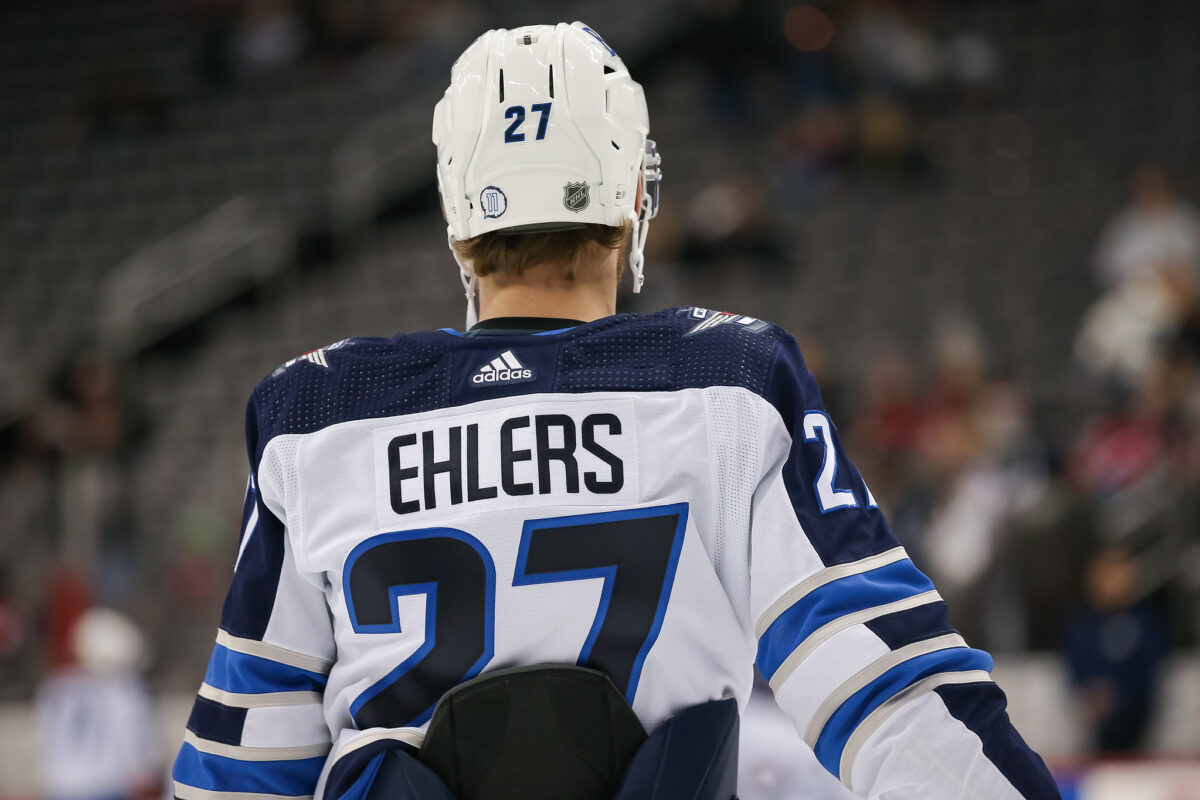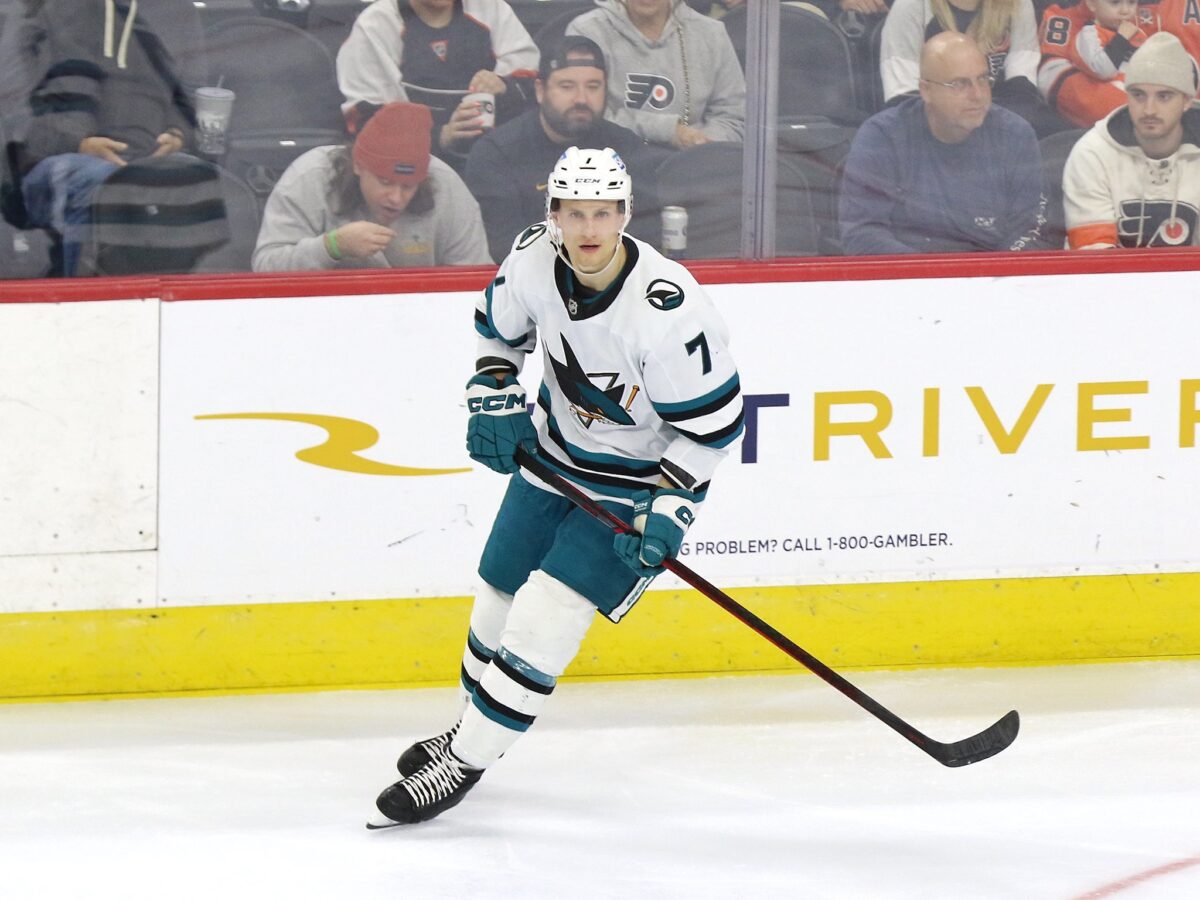The New Jersey Devils faced an uncertain future less than ten days ago. They were entering the NHL Draft and free agency following a season of cascading disappointments after setting team highs in wins and points just a year before. General manager Tom Fitzgerald had already checked off the top two needs on his to-do list with Sheldon Keefe’s hiring and Jacob Markstrom‘s acquisition. Still, he knew those moves would only be the start if he were to remake his team into a real contender.
Rumors before the draft were that Fitzgerald was calling around to teams with a robust list of needs to fill. At the time, he was said to be seeking forwards to fit in the top and bottom six, a top-pair defenseman, and a bottom-four defenseman. By the close of business on July 2, Fitzgerald had already crossed off three of the four needs. He found the bottom six forwards, Paul Cotter, Stefan Noesen, and Tomas Tatar, and good fits on defense, such as Brett Pesce, Brenden Dillon, and Jonathan Kovacevic.
Related: Devils’ Free Agent Additions Give Sheldon Keefe Many Line Options
The Devils could not find a top-six winger to replace Tyler Toffoli’s production. However, it was not for a lack of trying, as the Devils were reportedly negotiating with free agents Steven Stamkos and Jonathan Marchessault. Fitzgerald correctly realized that Noesen and Tatar could pitch in among the top six and provide a 200-foot dimension the Devils’ top six wingers have recently lacked. He has argued that having six top-six forwards is a misnomer; “I think when you look at the top six, I think we have plenty of top-six players, and I also think we’ve got enough complementary top-six players that can play with true top-six guys.” The Devils have at least four bonafide top-six forwards in Nico Hischier, Jack Hughes, Timo Meier, and Jesper Bratt, as well as several players who can slide up and be complementary pieces like Noesen, Tatar, Ondrej Palat, Erik Haula, and Dawson Mercer.
Scoring Goals Should Not Be a Problem for New Jersey
Fitzgerald has consistently said that the one item not on his punch list was adding more goal-scoring. The Devils will likely get a huge boost in their scoring just by being healthy. Hughes, Hischier, Meier, and Dougie Hamilton missed a combined 106 games last season. Hughes and Meier alone averaged almost .5 goals per game last season, while Hischier and Hamilton averaged close to a point per game and would have been on pace for over 30 and 20 goals, respectively. Mix in the expected return to form of Mercer, the emergence of Luke Hughes and Simon Nemec, and the secondary scoring contributions from Noesen and Tatar, and the Devils should not want for goals. They also should not need to score more goals as their defense and goaltending are markedly improved and should lead to fewer goals against.
Even with the influx of expected goals, the Devils should be buyers at the deadline, if not before. As buyers, the available player who makes the most sense to them is Nikolaj Ehlers. Beginning the season on an expiring deal, he is a prime candidate to be moved either before or during the season. His $6 million cap hit would make trading for him difficult for New Jersey at the season’s outset. Still, even with the money to be allocated to Mercer and Nolan Foote, the Devils should have enough accrued cap space by the deadline to add a pure rental like Ehlers. As the Florida Panthers proved, adding scoring depth at the deadline can pay dividends even if the player walks in free agency.
Ehlers may be too similar to what New Jersey already has in Bratt and Hughes, but adding the speed and skill he brings cannot be ignored. NHL Edge has him in the 94th percentile for top speed and 95th for speed bursts exceeding 22 miles per hour. The tangible talent would make New Jersey a nightmare for opponents off the rush. Keefe could utilize his speed to implement the high-pressure system he desires, which would likely help cause chaos and create turnovers.
The potential downside to Ehlers is his size. Though he is listed as six feet tall, he is only 175 pounds and is not known to be physically formidable. Even so, an acquisition of a speedy, talented winger who averages nearly 30 goals per 82 games for his career, all for a team not known for its offense, would perhaps make the Devils decide to double down on speed with the additions of size in their bottom six and defense sufficient as necessary pushback.
Ehlers is not an offense-only player. At 5v5 with Ehlers on the ice, the Jets outscored opponents by 29 goals, allowing 11 fewer goals than expected. His goals for percentage (GF%) was the highest on the team at over 65%, more than 10% higher than his stellar xGF% of 54. His stellar play is not limited to just last season. Throughout the last three seasons combined, the team was plus-56 at 5v5 with him on the ice and played to a GF% of 62, the best among Jets forwards. In that time, with him on the ice at 5v5, the team played to its best shooting and second-best save percentages.

The team seems set for now with the Devils’ forward depth and the mantra of getting stronger in the forecheck, along the walls, and winning more one-on-one battles all over the ice. Adding a piece in the future like Ehlers, who adds speed, tenacity, and skill, would only broaden the team’s forward diversity, provide a rare fifth bonafide top-six forward, and immensely strengthen the bottom six. The Devils also have the capital necessary to pry a player like Ehlers from the Jets, whether it be roster players, prospects like Seamus Casey, or draft picks. With the Jets possibly moving on from forward Rutger McGroarty, perhaps the teams could look to make a bigger deal for both forwards.
McGroarty is the prototypical power forward the Devils have been trying to develop for years. He finished his sophomore season with 56 points in 32 games, which was second on the Michigan Wolverines and put him ninth in the nation. He finished seventh in the country for points per game with 1.44. He also captained the United States Junior National Team to a gold medal at the 2024 IIHF World Junior Championship, scoring five goals and nine total points in seven games.
In addition to his talent, McGroarty would bring much-needed cap relief and stability. As Hughes, Mercer, and Nemec age out of their entry-level contracts and need more lucrative deals, the Devils must prioritize finding inexpensive talent. The key is that since McGroarty has not yet signed his entry-level deal, the Devils would get three full cost-controlled seasons where he could help the NHL roster.
Adding Center Depth Completes the Team
Fitzgerald confirmed that heading into training camp, his four starting centers are Hughes, Hischier, Haula, and Curtis Lazar. Lazar has shown he can play wing and center and is the only right-hand shot center to fill in at 4C. He is comfortable in the faceoff dot and has hovered around 50% for his career. His game is predicated on speed and hitting, winning pucks off the forecheck, and surprising skill around the net.
Lazar’s emergence has given the Devils comfort in their forward group, and they do not need to acquire a center before the season begins. He is beloved in the locker room and by the fans. Even if he is not the permanent answer at center, the Devils would be foolish to move on from him, especially considering his current salary and production.
As the season unfolds, increasing depth at center will surely be one of the top priorities for New Jersey. It is the largest gap in their prospect pool, so any augmentation is unlikely to come from within. Fortunately, at least two centers on expiring contracts could fit the Devils’ needs and are likely to be available at or before the deadline.
Nico Sturm – San Jose Sharks
The Devils and San Jose Sharks have a history of trading at the deadline. In each of the last two seasons, the teams have found synergy in the trade market. Both times, the Sharks facilitated the Devils’ needs in exchange for roster players and futures. Despite the additions of Toffoli and Alex Wennberg, plus the drafting of Macklin Celebrini, the Sharks are a few years away from serious contention for a playoff spot. One player they may be willing to part with as the season moves forward is center Nico Sturm.
Sturm is the quintessential fourth-line center. This past season, he was first in the NHL in faceoff win percentage, winning over 60% of his draws. He averages over 100 hits per 82 games for his career, and he would bring the experience of being part of a Stanley Cup winner to the locker room, joining his former Colorado Avalanche teammate Kurtis MacDermid. It is unclear what San Jose would be seeking in a trade but perhaps a player like Nate Bastian, who could use a fresh start and is still under team control, would be a good piece for the growing Sharks. The Devils also have prospects and picks to sweeten the deal if necessary. Bastian’s salary would offset most of Sturm’s cap hit and make the trade possible.

Lazar can hold down the fort without difficulty. Should the opportunity arise to get a player like Sturm, though, the Devils should pounce. His size at 6-foot-3 and 215 pounds and his faceoff prowess would make him an excellent successor to what Michael McLeod brought to the ice last season before he was arrested. Sturm should be affordable at or before the deadline, and the Devils can treat him as a rental if they want to extend him. His projected contract is only two years at $1.64 million per season (Projection by @AFPAnalytics). Finding value depth as the season grinds on is often the difference between playing in late May on an ice rink or a golf course. Adding a player like Sturm helps to ensure the Devils will be doing the former, not the latter.
